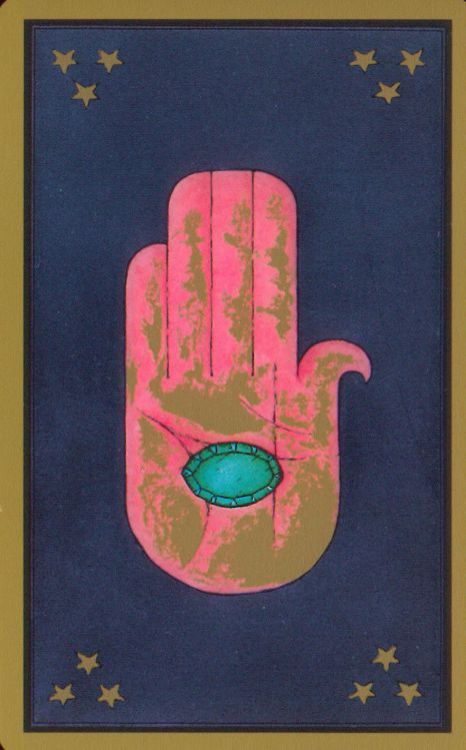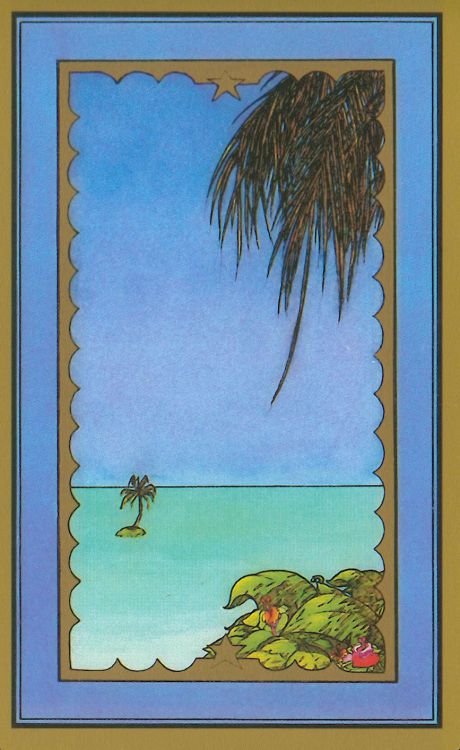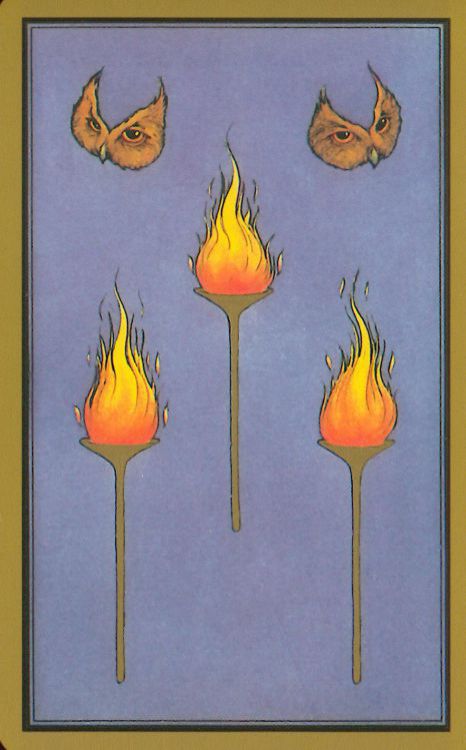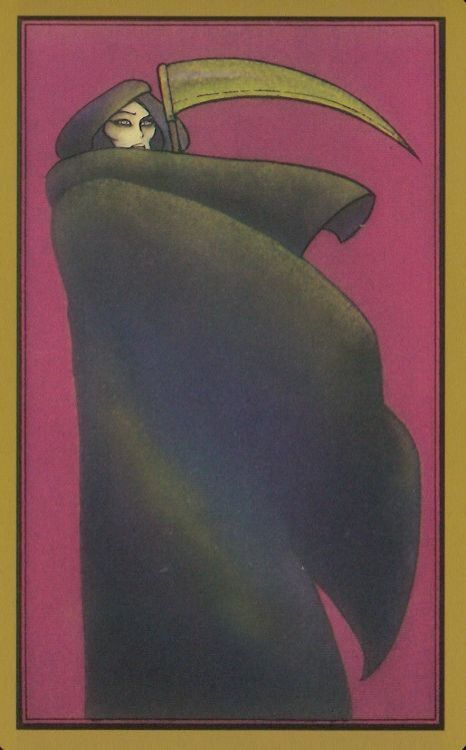There are few or no Arabizing games on the market inspired by the tales of a thousand and one nights. Even the prolific Rider-Waite-Smith Tarot market contains very few decks on this universe. These cards therefore offer a truly refreshing atmosphere in a market dominated by medieval fantasy in all its forms. I appreciate the presence of symbols such as the hand of Fatma or the Taj Mahal. The atmosphere of the game is rather positive thanks to its bright colors and the joyful posture of the characters. Only the Death card can be perceived as really negative.
After the rather positive first impression, unfortunately one quickly realizes that the booklet dates from a vanished era and that it deserves to be updated. Fortunately, there are on the market, other boxes or books on the Persian Tarot of Mrs. Indira certainly better designed. However, I think that the deck suffers from a real design flaw in its structure. It is rare that redundancies, duplicate cards appear to me in such a obvious way in the study of a deck. Moreover, some cards can be as abstract as the numeral cards of the Tarot de Marseille such as the 6 of Ecu. Certainly the abstract nature of the Minor Arcana of the Tarot de Marseille is well known, and assumed by its users. But one does not expect to find this level of abstraction in an oracle. The Lenormand system includes keywords or images in addition to card values (on pip cards) to give it meaning. In this oracle this is not the case for some cards.
For all these reasons, I willingly give up such a game to use a Lenormand instead (review of Pitanik here or review of Gilded Reverie here) or possibly the Gé oracle (review here) or the oracle of the Triad (review here). Even an oracle from Belline (review here) seems more relevant to me. And this, even if the reader can find boxes of Mrs. Indira's Persian Tarot with a deeper and more pedagogical book.























